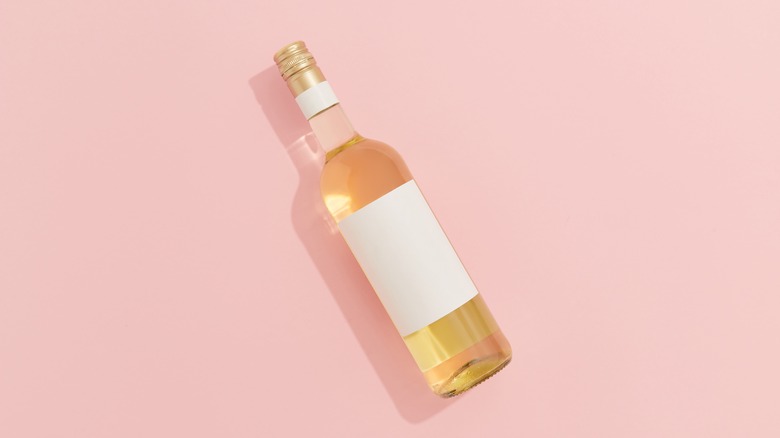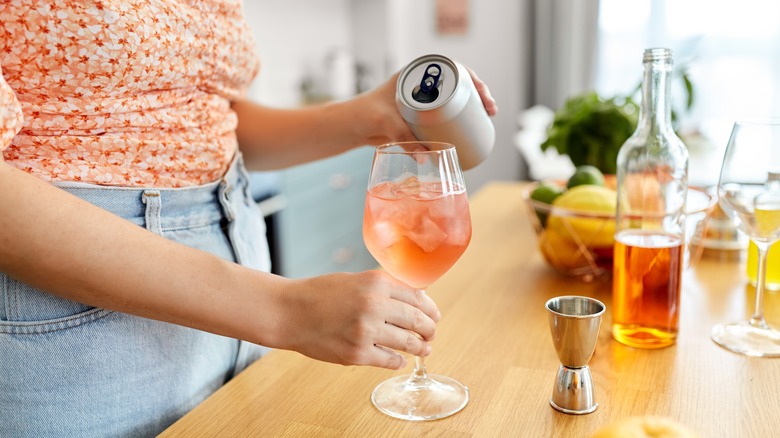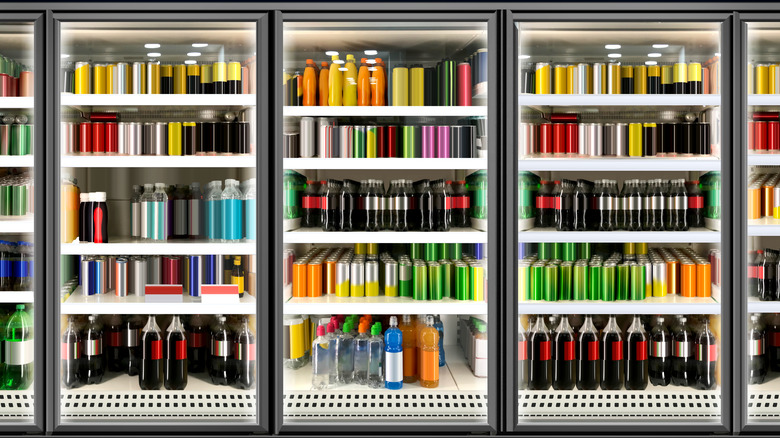What's The Difference Between Alcohol-Free And Non-Alcoholic Beverages?
Many people participate in Dry January at the start of the New Year, a practice where you give up drinking alcohol for the month. Some people do damp January instead, where the rules are not as strict, and you more or less curb your alcohol intake by cutting down on your regular amount. Regardless of what month it is, however, there is a growing sober-curious movement across the country.
Millennial and Gen Z Americans are drinking far less alcohol than in generations past, according to Gallup Trends. In their place, non-alcoholic beverages like wine, beer, spirits, and even adaptogen drinks (made with plant roots and herbs that are meant to help manage stress) are gaining a ton of popularity these days. You may have seen Katy Perry's "De Soi" aperitifs or Blake Lively's "Betty Buzz" sparkling mixers, among other celebrity brands getting in on the trend.
However, before indulging, there is an important difference to note between the labeling terms on these products. Some bottles will state "alcohol-free" while others say "non-alcoholic." And they are not the same thing.
The key differences between these two drink labels
According to the Code of Federal Regulations, the term "alcohol-free" means that the beverage contains no alcohol. Zero, nada, zilch. The product is completely free of any trace of alcohol once it is bottled and added to shelves.
The term "non-alcoholic," on the other hand, is broader and can mean the drink has a very low content, but always below 0.5% alcohol by volume (ABV). That's about the same amount as kombucha. That means beverages labeled as "non-alcoholic" may still contain trace amounts, but the levels are so minimal that they are considered negligible.
These regulations apply to both beer and wine. According to the Alcohol and Tobacco Tax and Trade Bureau (TTB), it is not required to print a pregnancy-related warning for drinks that contain less than 0.5% alcohol by volume. As a consumer, though, it's essential to check product labels or descriptions to understand the specific alcohol content in beverages labeled as either alcohol-free or non-alcoholic as these differences may matter for those who want to abstain from even the tiniest percentage.
Where dealcoholization comes in
The term "dealcoholized" is another category of non-alcoholic beverages that have trace amounts of alcohol. The process includes removing alcohol from a traditional beer, wine, or spirit using processes like reverse osmosis and vacuum distillation, among others. Dealcoholization can affect the taste, aroma, and mouthfeel of the beverage, so blending ingredients like fruit juices, tea, and botanicals are sometimes added to create a more pleasant flavor profile.
With all these terms thrown out, here's the most important things to keep in mind: The term "alcohol-free" is used when there is a complete absence of alcohol, while "non-alcoholic" may include about half a percent ABV. To get non-alcoholic beverages, the manufacturer may apply a dealcoholization process.
There are many delicious non-alcoholic and alcohol-free products out there. The next time you throw a party, it is wise to have at least a couple of NA products and mocktails on deck. You never know someone's preference and gone are the days anyone needs to feel awkward or left out for not drinking alcohol.


